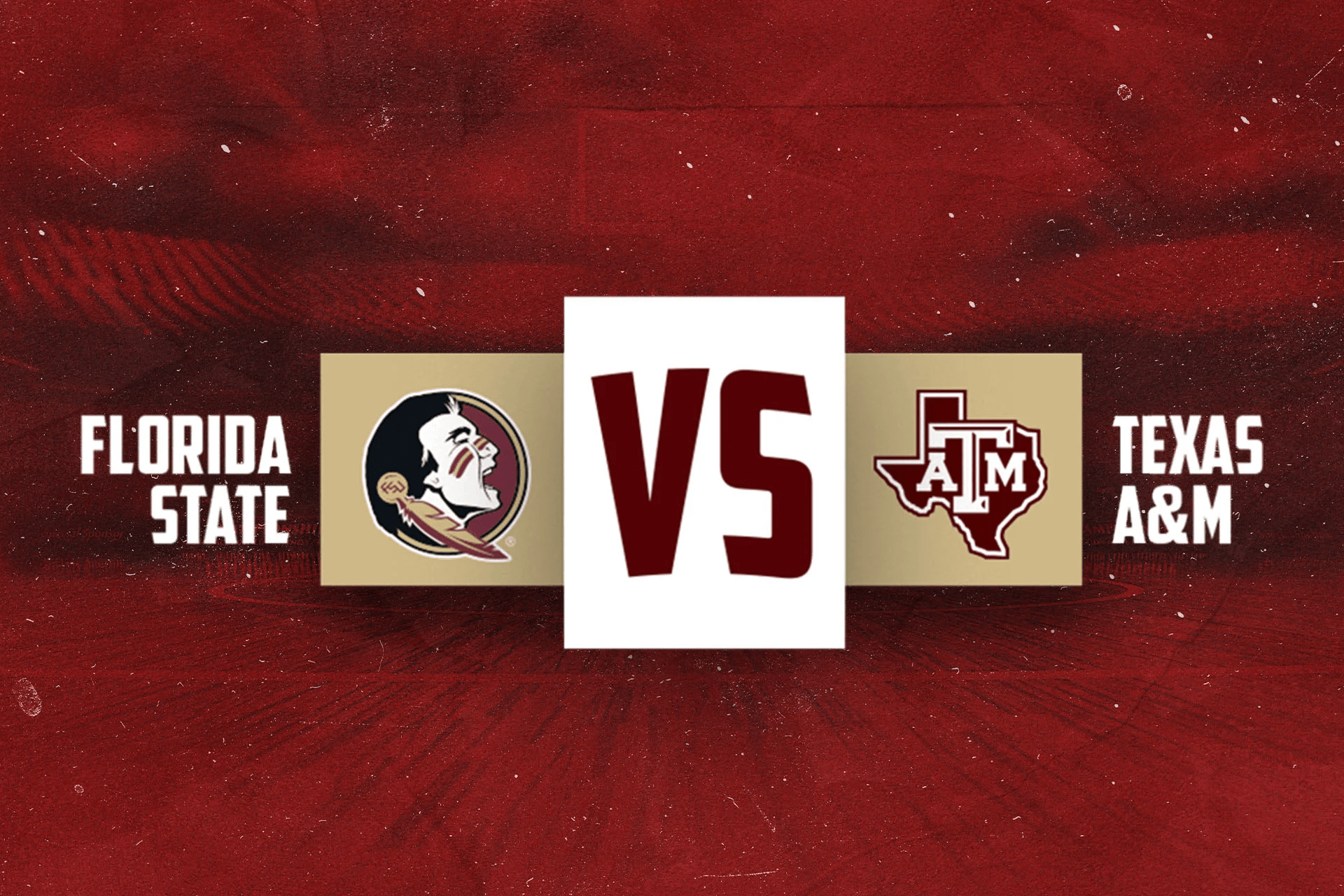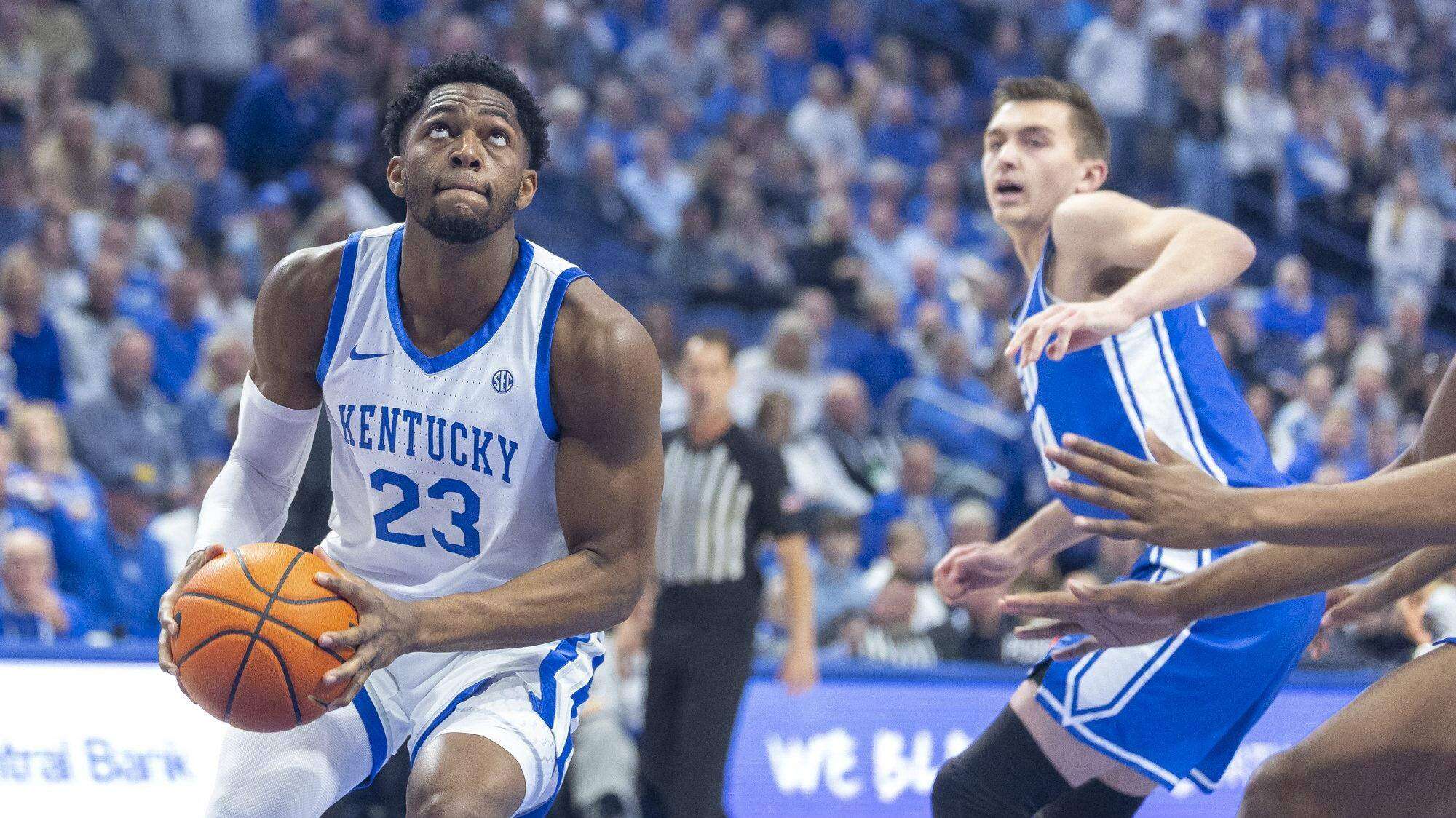Texas A&M Aggies vs. Florida State Seminoles Advanced Game Analysis
Texas A&M Aggies vs Florida State Seminoles Advanced Game Analysis Matchup Preview Table Team Record Points / Game Opp

Texas A&M Aggies vs Florida State Seminoles Advanced Game Analysis
Matchup Preview Table
| Team | Record | Points / Game | Opp Points / Game | Avg Score Margin | Eff FG% | 3P% | FT% | Assists / Game | Assists / Turnover | Total Rebounds / Game | Turnovers / Game |
|---|---|---|---|---|---|---|---|---|---|---|---|
| Texas A&M Aggies | 5-2 | 93.4 (#15) | 77.7 (#214) | +15.7 (#48) | 57.4% (#36) | 37.1% (#71) | 76.8% (#52) | 21.4 (#2) | 1.852 (#20) | 34.3 (#223) | 11.6 (#124) |
| Florida State Seminoles | 5-1 | 93.2 (#16) | 70.3 (#95) | +22.8 (#17) | 53.9% (#100) | 33.9% (#154) | 73.1% (#137) | 18.8 (#21) | 1.687 (#31) | 39.8 (#56) | 11.2 (#100) |
Quick Glance Summary Card
Game Snapshot
===========================================
Form and Margin
- Texas A&M: 5-2, 93.4 PPG (#15), +15.7 margin (#48)
- Florida State: 5-1, 93.2 PPG (#16), +22.8 margin (#17) 🔥
Offensive Level
Texas A&M ████████████░🔥 93.4 PPG (#15), 57.4% eFG (#36)
Florida St ████████████░🔥 93.2 PPG (#16), 53.9% eFG (#100)
Defensive Scoring
Texas A&M █████░░░░░░░░ 77.7 Opp PPG (#214)
Florida St █████████░░░░ 70.3 Opp PPG (#95)
Rebounding
Texas A&M █████░░░░░░░░ 34.3 RPG (#223)
Florida St █████████░░░░ 39.8 RPG (#56)
Ball Movement and Turnovers
Texas A&M 21.4 AST (#2), 1.852 A/T (#20),
17.9 Opp TOs forced (#5)
Florida St 18.8 AST (#21), 1.687 A/T (#31),
21.2 Opp TOs forced (#1), 12.0 steals (#1) 🔥
Headline:
Two top 20 offenses collide, but Florida State pairs its scoring with
a much stronger defensive profile, elite pressure and a clear glass
edge, while Texas A&M leans on a beautiful passing game and heavy
three point volume to keep pace.
Team Identity Profiles
Texas A&M Aggies Team Profile
Texas A&M arrives at 5-2 with one of the most aesthetically pleasing and efficient offenses in the country. The Aggies average 93.4 points per game (#15) on 57.4 percent effective field goal percentage (#36) and 47.9 percent overall shooting (#75). Their shooting efficiency metric lands at 1.254 (#16), which places them firmly among the nation’s elite in turning possessions into points. This is not an inflated pace only profile. It is real efficiency powered by spacing, shooting and passing.
The playmaking numbers jump off the page. Texas A&M hands out 21.4 assists per game (#2) with an assists per field goal made mark of 0.721 (#2). That means nearly three out of every four made baskets are set up by a pass. It is a true share the ball attack that moves defenders, uses multiple sides and punishes late rotations. The Aggies also protect the ball fairly well at 11.6 turnovers per game (#124) and a 1.852 assist to turnover ratio (#20). When they are humming, they create a steady stream of high quality looks without giving away many empty possessions.
From a shot selection standpoint, Texas A&M embraces the modern three and rim profile. They hit 37.1 percent from three (#71) while taking 31.6 attempts per game (#13) and making 11.7 threes per night (#7). That combination of volume and efficiency stretches defenses horizontally and fuels scoring runs. Inside the arc, they convert 59.2 percent on twos (#41), further validating the quality of their shot creation. They also live at the foul line with a 0.468 free throw attempt rate (#43), 29.0 attempts per game (#20) and 22.3 makes per game (#12) at 76.8 percent (#52). Almost every possession is either a clean look at the rim, a catch and shoot three or a trip to the stripe.
Defensively, the profile is more complicated. Texas A&M allows 77.7 points per game (#214) and 57.0 percent opponent effective field goal percentage (#326) with 48.4 percent overall field goal allowed (#300). Opponents shoot a blistering 42.0 percent from three (#359). That is an extreme outlier that signals real concern guarding the arc. However, the Aggies do respond with disruptive pressure. They force 17.9 opponent turnovers per game (#5) and 21.1 percent opponent turnovers per play (#7), powered by 9.0 steals per game (#41) and a 10.6 percent steals per play rate (#51). When the defense wins, it is often by generating takeaways, not by smothering shot quality.
On the glass, Texas A&M is more average. They collect 34.3 total rebounds per game (#223), with 8.6 offensive boards (#229) and 22.4 defensive rebounds (#189). Their offensive rebound percentage is 27.5 percent (#214) and defensive rebound percentage is 75.5 percent (#74). Opponents grab 32.7 rebounds per game (#84), with 7.3 offensive boards (#47). The Aggies usually do enough to hold serve on the glass but do not profile as a dominant rebounding unit. They compensate with tempo, threes and free throws.
Foul numbers are moderately high. Texas A&M commits 19.6 personal fouls per game (#246) with 23.1 percent fouls per play (#208). Opponents commit 20.9 fouls per game (#58) at 24.2 percent per play (#93), so whistle volume is elevated on both sides. Games involving the Aggies tend to be high possession, high scoring and somewhat whistle heavy. That environment magnifies the value of every extra possession and every three point heater.
Florida State Seminoles Team Profile
Florida State enters at 5-1 with a statistical profile that looks even more balanced. The Seminoles also score at an elite rate with 93.2 points per game (#16), but they allow only 70.3 points per game (#95) for an impressive +22.8 scoring margin (#17). Their offense runs on volume and pressure. Florida State attempts 70.0 field goals per game (#2), the highest tier of pace, and still maintains 53.9 percent effective field goal percentage (#100) and 44.8 percent overall shooting (#162). Their shooting efficiency stands at 1.147 (#100). It is not as pristine as Texas A&M’s, but when attached to their turnover forcing and rebounding, it becomes extremely potent.
The Seminoles are a classic high volume perimeter attack. They take 37.8 threes per game (#1) and make 12.8 (#2) at 33.9 percent (#154). The percentage is good, not spectacular, yet the sheer volume of attempts multiplies the impact. Inside the arc they hit 57.5 percent on twos (#63), and they add 17.7 free throws per game (#92) on 24.2 attempts (#98) at 73.1 percent (#137). Where Texas A&M leans into precision and efficiency, Florida State leans into pace and repetition. More shots at decent efficiency can stack up quickly.
Playmaking is strong as well. Florida State logs 18.8 assists per game (#21) with an assists per field goal made ratio of 0.601 (#61) and an assist to turnover ratio of 1.687 (#31). They commit 11.2 turnovers per game (#100), which is very manageable for a team playing this fast. The combination of pace, passing and shot volume keeps defenses under constant stress.
Defensively, the Seminoles are disruptive and effective. They hold opponents to 45.8 percent effective field goal percentage (#49) and 39.8 percent overall shooting (#57). Opponent two point percentage is 46.4 percent (#65) and opponent three point percentage is 30.0 percent (#84). Those are strong suppression marks at both levels. The pressure metrics are elite. Florida State racks up 12.0 steals per game (#1) and a 13.1 percent steals per play rate (#10). They force 21.2 opponent turnovers per game (#1) and a 23.2 percent opponent turnovers per play rate (#1). That is a relentless pressure defense that can blow games open with turnover fueled runs.
The main defensive weakness is on the glass and at the line. Florida State gives up 40.5 opponent rebounds per game (#326) with 11.0 offensive boards allowed (#294) and 26.8 defensive rebounds surrendered (#330). Their defensive rebound percentage sits at 69.2 percent (#231), and opponent offensive rebound percentage is 30.8 percent (#231). They also put opponents on the line often. Opponents post a 0.427 free throw attempt rate (#282) and 24.8 free throw attempts per game (#277). Florida State commits 21.0 fouls per game (#302) at 23.0 percent fouls per play (#200). The Seminoles win by creating chaos and taking away shot quality, but they do yield extra possessions on the glass and points at the stripe.
Team Identity Snapshot Lists
Texas A&M Identity Snapshot
- Elite offense at 93.4 PPG (#15) with 57.4% effective field goal percentage (#36) and 1.254 shooting efficiency (#16)
- High level passing attack, 21.4 assists per game (#2) and 0.721 assists per field goal made (#2)
- Heavy three point volume, 11.7 makes (#7) on 31.6 attempts (#13) at 37.1% (#71)
- Lives at the line, 0.468 FTA per FGA (#43), 29.0 attempts (#20), 22.3 makes (#12)
- Defensive weakness guarding the arc, 42.0% opponent three point shooting (#359)
- Forces turnovers at 17.9 per game (#5) and 21.1% opponent turnovers per play (#7)
- Average rebounding with 34.3 boards per game (#223) and 27.5% offensive rebound rate (#214)
Florida State Identity Snapshot
- High speed offense, 93.2 PPG (#16) with 70.0 FGA per game (#2)
- Extreme three point volume, 37.8 attempts per game (#1) and 12.8 makes (#2) at 33.9% (#154)
- Solid efficiency at 53.9% effective field goal percentage (#100) and 1.147 shooting efficiency (#100)
- Strong passing at 18.8 assists per game (#21) and 1.687 assist to turnover ratio (#31)
- Defensive shot suppression, 45.8% opponent eFG (#49) and 30.0% opponent three point shooting (#84)
- Best in the nation at forcing turnovers, 21.2 opponent turnovers per game (#1), 23.2% opponent turnovers per play (#1), 12.0 steals per game (#1)
- Rebounding and foul discipline weaknesses, 40.5 opponent rebounds (#326) and 21.0 fouls per game (#302)
High Level Team Comparison
At the macro level, this matchup is not a typical top heavy favorite against an overmatched underdog. Instead it features two offenses that both sit near the top 20 in scoring and efficiency, but with different stylistic foundations. Texas A&M is the more polished half court scoring team. Florida State is the more explosive chaos team that thrives on pace and pressure.
The Aggies excel in structured offense. Their 21.4 assists per game (#2) and 0.721 assists per made field goal (#2) describe a system that generates open threes and rim finishes with precision. Their three point percentage at 37.1 percent (#71) and free throw efficiency at 76.8 percent (#52) make those created opportunities count. The tradeoff is that their defense has struggled to contest the arc, with opponents shooting 42.0 percent from three (#359).
Florida State, by contrast, wants to drag games into a zone of high volume possessions, aggressive passing lanes and quick shot decisions. Their 12.0 steals per game (#1) and 21.2 opponent turnovers per game (#1) define the defensive identity. Offensively, 37.8 three point attempts per game (#1) ensures that even an average shooting night can produce a devastating math advantage if the turnover and offensive rebound counts cooperate.
The central question becomes whether Texas A&M’s clean, high efficiency offense can survive the Seminoles pressure and whether the Aggies can force Florida State into enough contested threes and one shot possessions to offset their own three point defense issues. The battle lines are clear. Execution will decide whether this turns into a track meet controlled by Florida State or an up tempo but more half court oriented game where A&M’s passing and shot making can fully shine.
By The Numbers: Core Matchup Metrics
Scoring and Margin
Points Per Game Texas A&M ████████████░🔥 93.4 (#15) Florida St ████████████░🔥 93.2 (#16) Opponent Points Per Game Texas A&M █████░░░░░░░░ 77.7 (#214) Florida St █████████░░░░ 70.3 (#95) Average Scoring Margin Texas A&M █████████░░░░ +15.7 (#48) Florida St ████████████░🔥 +22.8 (#17)
Both teams can put points on the board in a hurry. The raw scoring difference is negligible, but the defensive side tilts toward Florida State. Holding opponents to 70.3 points per game (#95) while scoring over 93 points produces one of the better margins in the nation. Texas A&M’s 77.7 points allowed (#214) is serviceable in high tempo settings but clearly less stable if shots are not falling. Margin data suggests Florida State has been more consistently dominant from tip to final horn.
Shooting Efficiency
Effective Field Goal Percentage Texas A&M ██████████░░░ 57.4% (#36) Florida St ████████░░░░░ 53.9% (#100) Three Point Percentage Texas A&M █████████░░░░ 37.1% (#71) Florida St ███████░░░░░░ 33.9% (#154) Two Point Percentage Texas A&M █████████░░░░ 59.2% (#41) Florida St ████████░░░░░ 57.5% (#63) Shooting Efficiency Index Texas A&M 1.254 (#16) Florida St 1.147 (#100)
Texas A&M owns the efficiency edge. Higher effective field goal percentage, better three point percentage, slightly stronger two point percentage and a superior shooting efficiency index all support the idea that the Aggies maximize the value of each possession when they initiate offense in the half court. Florida State is still very efficient, particularly given the extreme shot volume, but they rely more on quantity combined with disruption.
Rebounding
Total Rebounds Per Game Texas A&M █████░░░░░░░░ 34.3 (#223) Florida St █████████░░░░ 39.8 (#56) Offensive Rebounds Texas A&M 8.6 ORB (#229), 27.5% ORB% (#214) Florida St 12.0 ORB (#35), 30.9% ORB% (#126) Defensive Rebound Percentage Texas A&M 75.5% DRB% (#74) Florida St 69.2% DRB% (#231)
The glass battle is nuanced. Florida State grabs more total boards and clearly more offensive rebounds. Their 12.0 offensive rebounds per game (#35) at 30.9 percent offensive rebound rate (#126) represent a real second chance scoring pipeline. Texas A&M, however, is the better defensive rebounding team on a percentage basis. The Aggies allow only 24.5 percent opponent offensive rebound rate (#74) and limit opponents to 7.3 offensive boards per game (#47). Florida State’s own defensive rebounding is a weakness, which could give A&M additional scoring chances if they commit bodies to the glass.
Ball Security and Pressure
Assists and Turnovers
Texas A&M 21.4 AST (#2)
11.6 TO (#124)
1.852 A/T (#20)
Florida St 18.8 AST (#21)
11.2 TO (#100)
1.687 A/T (#31)
Turnovers Forced
Texas A&M 17.9 Opp TO (#5)
21.1% Opp TO/play (#7)
9.0 steals (#41)
Florida St 21.2 Opp TO (#1)
23.2% Opp TO/play (#1)
12.0 steals (#1) 🔥
Both offenses protect the ball reasonably well. Texas A&M is slightly better by assist to turnover ratio, Florida State commits slightly fewer turnovers in raw volume. The defensive pressure difference is sharper. Florida State is number one in opponent turnovers per game and per play, and number one in steals. Texas A&M is also elite in this area but a tier below. The net effect is that the Seminoles are more likely to create outlier runs through takeaways.
Fouls and Free Throws
Free Throw Rate (FTA per FGA) Texas A&M 0.468 (#43), 29.0 FTA (#20), 22.3 FTM (#12) Florida St 0.345 (#220), 24.2 FTA (#98), 17.7 FTM (#92) Free Throw Percentage Texas A&M 76.8% (#52) Florida St 73.1% (#137) Fouls Per Game Texas A&M 19.6 PF (#246) Florida St 21.0 PF (#302)
Texas A&M has a structured and repeatable free throw edge. They get to the line more often and convert at a higher clip. Florida State fouls more and allows a 0.427 opponent free throw rate (#282), which suggests that the Aggies can leverage drives, cuts and mismatches to live at the stripe. In a high possession, whistle heavy game, that line advantage can meaningfully compress any gap in turnover margin or rebounding.
Advanced Metrics and Tempo Analysis
Pace in this matchup projects to be high. Texas A&M already plays with 62.0 field goal attempts per game (#87) and 29.0 free throw attempts (#20). Florida State pushes the tempo even harder at 70.0 field goal attempts per game (#2) and 24.2 free throw attempts (#98). Both teams also shoot large numbers of threes, which means quick possessions and long rebounds that feed into transition opportunities on both sides.
From an efficiency perspective, Texas A&M’s 1.254 shooting efficiency (#16) versus Florida State’s 1.147 (#100) gives the Aggies a slight edge per shot. When multiplied by likely possession counts that are elevated, small efficiency differences can translate into several points over forty minutes. However, Florida State balances that with extra possessions from offensive rebounding, steals and forced turnovers. Their 21.2 opponent turnovers (#1) and 12.0 offensive rebounds (#35) mean they essentially play with extra shots built into the game script.
Shot Profile and Matchup Fit
Texas A&M Offense - 37.1% from three (#71) on 31.6 attempts (#13) - 59.2% on twos (#41) - 76.8% at the line (#52) - 57.4% effective field goal (#36) Florida State Defense - 30.0% opponent three point shooting (#84) - 46.4% opponent two point shooting (#65) - 45.8% opponent effective field goal (#49) Florida State Offense - 33.9% from three (#154) on 37.8 attempts (#1) - 57.5% on twos (#63) - 73.1% at the line (#137) Texas A&M Defense - 42.0% opponent three point shooting (#359) - 52.8% opponent two point shooting (#198) - 57.0% opponent effective field goal (#326)
The shot profile contrast is striking. Texas A&M’s offense is built to attack exactly the sort of defense that Florida State usually brings to the table. The Aggies see a sound shot suppression unit that holds opponents to 30.0 percent from three and 46.4 percent from two. Something will have to give. If A&M maintains anything close to its 37.1 percent three point shooting while also living at the line, the Seminoles defense will be under a type of stress it has not fully faced yet.
On the other end, Florida State’s high volume three point approach is facing a defense that has allowed 42.0 percent from deep, one of the worst marks in the nation. Even with a modest 33.9 percent baseline, the Seminoles could reasonably expect a bump facing this profile. When paired with their aggression in getting downhill and their second chance opportunities on the glass, this is a favorable offensive environment for Florida State.
Offense vs Defense Matchup Breakdown
Texas A&M Offense vs Florida State Defense
Texas A&M’s half court system featuring ball reversals, drive and kick sequences and interior touches will be tested by Florida State’s ball pressure. With 12.0 steals per game and a 13.1 percent steals per play rate, the Seminoles will deny passing lanes, jump handoffs and hunt for live ball turnovers. The Aggies counter with 1.852 assist to turnover ratio (#20) and elite collective decision making. If they can maintain their usual poise, the advantage swings back to their favor because every broken trap leads to a numbers advantage and a high quality shot.
The key metrics for this side of the matchup are turnovers and three point percentage. If Texas A&M keeps turnovers near their 11.6 per game baseline and continues to hit near 37 percent from three, they can punish Florida State for overhelp and late closeouts. The Aggies free throw rate also looms large. Seminoles defenders already foul frequently, and A&M’s 0.468 free throw attempt rate offers a clear path to put Florida State starters in early foul trouble. If key FSU perimeter defenders have to sit, the pressure profile may soften and open the door for a full scale Aggie offensive showcase.
Florida State Offense vs Texas A&M Defense
On this side of the ball, Florida State’s approach lines up almost perfectly with Texas A&M’s biggest defensive vulnerability. The Seminoles enjoy firing 37.8 threes per game and making 12.8. The Aggies have allowed 9.7 opponent threes per game (#321) on that 42.0 percent clip (#359). Unless Texas A&M makes real schematic adjustments, Florida State will find open threes through drag screens in transition, drive and kick sequences and skip passes out of post touches.
Texas A&M does have leverage through turnover creation. They force 17.9 opponent turnovers per game, so the Seminoles ball handlers must balance aggression with ball security. Florida State has been solid in that area, but this is a different level of opponent in terms of offensive punishment after turnovers. Each sloppy possession is likely to turn into an Aggie three or free throws at the other end. The net result is a high variance environment. Florida State has a path to a barrage of threes. Texas A&M has a path to flipping that script with live ball steals of their own.
Offensive Edge
Offensive Edge Meter
Texas A&M ████████████░🔥
- 93.4 PPG (#15)
- 57.4% eFG (#36)
- 37.1% from three (#71) on 31.6 attempts (#13)
- 1.254 shooting efficiency (#16)
- 21.4 assists (#2), 1.852 A/T (#20)
Florida St ███████████░░
- 93.2 PPG (#16)
- 53.9% eFG (#100)
- 33.9% from three (#154) on 37.8 attempts (#1)
- 1.147 shooting efficiency (#100)
- 18.8 assists (#21), 1.687 A/T (#31)
Net Offensive Edge: Slightly to Texas A&M on per possession efficiency
and shot making quality, with Florida State holding
a volume advantage.
Defensive Edge
Defensive Edge Meter
Texas A&M ████░░░░░░░░░
- 77.7 Opp PPG (#214)
- 57.0% Opp eFG (#326)
- 42.0% Opp 3P (#359)
- 17.9 Opp TO (#5)
Florida St █████████░░░░
- 70.3 Opp PPG (#95)
- 45.8% Opp eFG (#49)
- 30.0% Opp 3P (#84)
- 21.2 Opp TO (#1), 12.0 steals (#1)
Net Defensive Edge: Clearly to Florida State, which combines strong shot
suppression with elite turnover creation despite its
issues on the defensive glass and fouls.
Style Matchup and Tempo Projection
This game projects as a fast, aggressive contest where both teams are comfortable pushing pace. Florida State will not hesitate to fire early threes, extend pressure and look for runouts off steals and long rebounds. Texas A&M is willing to run but also has the tools to punish gambles by flowing into secondary break threes or quick hitting sets before the defense is set.
If the game tilts toward pure chaos, with turnovers piling up and shot selection loosening, the underlying numbers suggest Florida State is more experienced in that environment. Their system is built around it. If the game, while fast, stays relatively clean and more possessions are played in balanced half court settings, Texas A&M’s offensive precision becomes more impactful. Both sides will try to nudge the dynamic toward their comfort zone possession by possession.
Key Tactical Battlegrounds
- Texas A&M three point percentage vs Florida State closeouts: If the Aggies stay near or above 37.1 percent from deep, they can match or surpass Florida State’s volume based perimeter attack.
- Florida State three point volume vs Texas A&M perimeter defense: The Seminoles could see a spike above their 33.9 percent baseline facing a defense that has allowed 42.0 percent from three.
- Turnover differential: Both teams force a high number of giveaways. Whichever side finishes with the positive margin will likely control key scoring runs.
- Free throw gap: Texas A&M’s combination of high free throw rate and strong conversion can erase a modest disadvantage in rebounding or turnovers.
- Offensive rebounding by Florida State: If the Seminoles maintain or exceed 12.0 offensive boards, second chance threes could prove decisive.
In Game and Live Angle Notes
- Early shooting from deep: If one side starts significantly hotter from three, that will dictate substitution patterns and defensive adjustments quickly.
- Foul trouble on perimeter defenders: Florida State cannot afford multiple guards in foul trouble given their reliance on ball pressure. A&M also needs its primary creators on the floor to keep turnovers in check.
- Turnover clustering: A sequence of back to back turnovers leading to transition threes is how this game can rapidly swing from two possessions to double digits.
- Rebounding trend: If Texas A&M competes evenly or wins the glass against a team that normally grabs nearly 40 boards, that is a sign their physicality is matching Florida State’s.
Key Players and Unit Impact
Texas A&M Aggies
For Texas A&M, the backcourt and wings that drive the 21.4 assists per game are the engine of everything. The primary ball handlers must read pressure, anticipate traps and consistently find the open man without drifting into carelessness. Their ability to maintain the 1.852 assist to turnover ratio against the nation’s most aggressive turnover forcing defense will determine whether the Aggies can fully access their three point and free throw advantages.
Shooting specialists on the perimeter will have clean chances if the ball moves quickly. With 11.7 made threes per game and a 37.1 percent success rate, A&M has multiple threats who can punish late rotations. If two or more shooters find rhythm, Florida State faces a real dilemma between continuing to gamble for steals or dialing back pressure to better contest the arc.
In the frontcourt, the Aggies bigs have two jobs. First, they must anchor defensive rebounding to prevent Florida State from feasting on second chance threes. Their 75.5 percent defensive rebound rate provides a strong baseline, but that number will be tested. Second, they need to use rolls, seals and cuts to generate high value interior touches that force the Seminoles into help rotations and fouls. Every extra trip to the line not only produces points but also chips away at Florida State’s defensive depth.
Florida State Seminoles
Florida State’s primary creators are tasked with balancing aggression and control. Their system thrives when guards and wings attack gaps, spray the ball to shooters and pressure the rim, all while maintaining turnovers near their 11.2 per game baseline. With Texas A&M forcing 17.9 turnovers per game, any spike above usual numbers will give the Aggies easy points and undercut the Seminoles volume edge.
The shooters who take those 37.8 threes per game are pivotal. If they simply meet their baseline 33.9 percent in the context of this particular defense, that alone may be enough to keep the scoreboard tilted. If they shoot above that level, the cumulative effect of made threes and forced turnovers could be overwhelming.
Defensively, Florida State’s guards and wings are the tone setters. Their hands, anticipation and ability to recover after gambles form the backbone of the number one ranking in opponent turnovers. The frontcourt must live with some foul risk at the rim while trying to limit Texas A&M’s free throw parade. On the glass, Seminole bigs need to elevate above their usual defensive rebounding baseline to prevent the Aggies from stealing extra possessions that negate the turnover advantage.
Coaching Impact
Texas A&M’s staff has clearly installed an offensive scheme that prioritizes ball movement, spacing and a modern shot profile. The assist numbers and shot distribution reflect an emphasis on creating advantages collectively rather than through constant isolation. Against Florida State, the staff’s game planning will focus on pressure release solutions, such as quick outlets, slip cuts, back doors and structured press breaks that lead directly into early offense three point attempts.
On the defensive end, the coaching staff faces a strategic choice. They can maintain their typical pressure oriented approach, accepting the risk of surrendered open threes, or they can adjust coverage rules to stay more attached to shooters while selectively picking spots to trap and dig. Any schematic tweak that successfully lowers Florida State’s three point quality without sacrificing turnover creation would be a key edge.
Florida State’s coaching staff has leaned fully into the identity of a pressure heavy, three point volume team. The success in steals, opponent turnovers and scoring margin validates that vision. In this matchup, they must calibrate pressure levels against a passing team that can dissect overly aggressive schemes. Offensively, they may emphasize paint touches and post touches early to test Texas A&M’s interior defense and also to create inside out three point looks rather than relying only on early clock pull ups.
Risk Matrix and Scenario Tree
Scenario 1: Florida State Chaos Game - FSU forces 20+ turnovers, hits 13+ threes at or above 35% - Texas A&M struggles to reach usual assist to turnover ratio - Seminoles convert live ball turnovers into transition scores - Likely Outcome: Florida State pulls away with a double digit win, driven by runs in both halves Scenario 2: Texas A&M Precision Game - A&M keeps turnovers near 11 - 12, maintains 37% from three - Aggies live at the line, approaching or exceeding 30 FTA - Florida State foul trouble limits defensive aggression - Likely Outcome: Tight game into the final minutes where A&M’s half court execution and free throws gain a narrow edge Scenario 3: Rebounding and Free Throw Swing - Florida State dominates offensive glass with 14+ ORB - Texas A&M responds with a significant free throw advantage - Both teams shoot well from deep - Likely Outcome: High scoring shootout that comes down to late execution and which side converts more second chance or free throw opportunities Scenario 4: Cold Perimeter Night - Both teams shoot below their three point baselines - Game shifts toward rim finishing, free throws and turnovers - Florida State benefits from extra possessions, A&M from higher free throw percentage - Likely Outcome: Medium scoring contest where margin of error shrinks and single possession decisions over final three minutes decide the outcome
Simulation Model and Expected Distribution
If this matchup were simulated over a large set of games using only the current season numbers, several consistent patterns would likely appear. Florida State’s combination of turnover creation and offensive rebounding produces more shot attempts than opponents on average. Texas A&M’s combination of shooting efficiency and free throw generation produces more points per shot than most teams can match. When those forces collide, outcomes tend to revolve around which side pulls the other toward its preferred game script.
In many simulated outcomes, Florida State’s pressure succeeds in pushing the Aggies closer to 15 or more turnovers. That, combined with strong offensive rebounding and a positive three point shooting night, leads to Seminole wins with margins in the mid single digits to mid teens. In other outcomes, Texas A&M keeps giveaways near their baseline, leverages the free throw and three point gap and forces Florida State into half court possessions where their own shooting defense weaknesses are less exploitable. Those games tighten considerably and often tilt toward the Aggies late.
Across the full distribution, Florida State appears to hold a modest edge due to stronger defensive efficiency, turnover creation and rebounding volume. However, Texas A&M’s offensive ceiling is high enough that any tilt in turnovers or fouls in their favor quickly increases their win share. This is not a mismatch. It is a high level contest where both teams possess realistic paths to control the narrative.
Final Forecast and Edge Summary
Summarizing the key edges:
- Offensive efficiency: Slight advantage to Texas A&M, which owns higher effective field goal percentage, stronger three point percentage and better shooting efficiency.
- Defensive performance: Clear advantage to Florida State, which holds opponents to lower percentages at both levels while still generating turnovers at an elite rate.
- Turnovers and steals: Advantage to Florida State in volume, with Texas A&M still well above average in this area.
- Rebounding: Advantage to Florida State in total boards and offensive rebounds, with Texas A&M more secure on the defensive glass percentage wise.
- Free throws: Advantage to Texas A&M, which draws more fouls and converts at a higher rate, while Florida State fouls more often.
Putting these elements together, Florida State has more ways to tilt the possession count and limit opponent efficiency, while Texas A&M has more ways to squeeze maximum value from each shot and trip to the line. Given Florida State’s stronger scoring margin and defensive metrics, they warrant a small analytical edge, especially in a game likely to feature extended stretches of chaos. At the same time, if Texas A&M’s guards win the pressure battle and the shooters meet or exceed their usual clip, the Aggies can absolutely flip that expectation.
Final Projection
Projected Score: Florida State Seminoles 92, Texas A&M Aggies 86
The projection leans toward a Florida State win in a high scoring, up tempo contest where the Seminoles generate just enough extra possessions through steals and offensive rebounds to offset Texas A&M’s superior shooting efficiency and free throw edge. Expect stretches where the Aggies offense looks unstoppable, followed by Florida State runs fueled by turnovers and transition threes. Over forty minutes, the combination of defensive impact and volume shooting gives the Seminoles a slight but meaningful advantage on the scoreboard.
bet105 Sportsbook Note
For the best odds on NCAA games like Texas A&M vs Florida State, visit bet105, the top sportsbook with reduced juice, fast crypto payouts, and sharp friendly limits.
For the best NCAA basketball odds, visit bet105, the top sportsbook with reduced juice, fast crypto payouts and sharp-friendly limits.
Disclaimer
This analysis uses AI-assisted statistical research alongside human analysis and editorial oversight. Despite verification efforts, data errors may occur. Readers should independently verify odds, fighter stats, and records before betting. Projections are analytical estimates, not guarantees.











